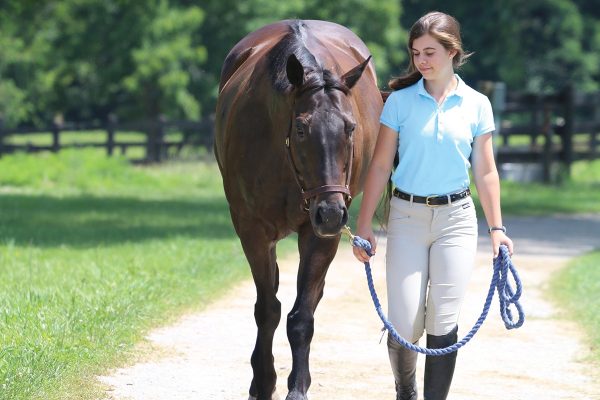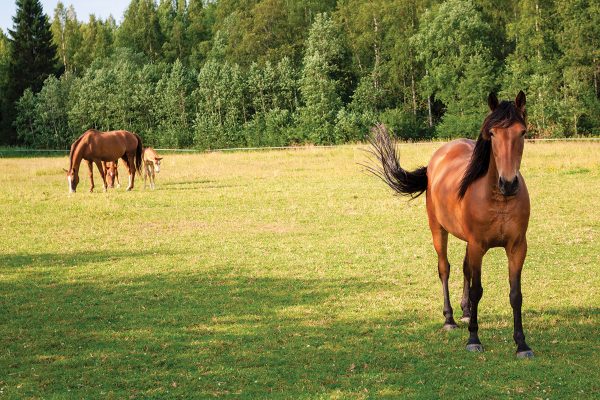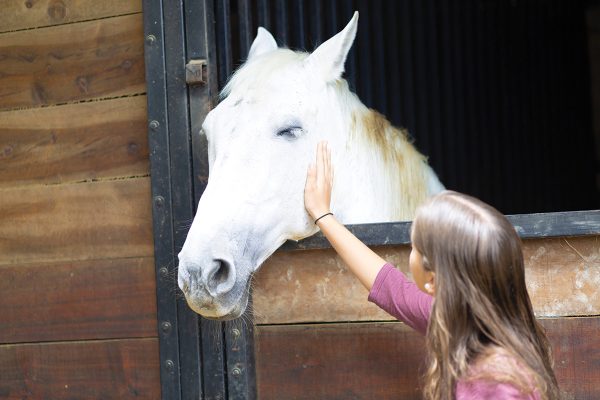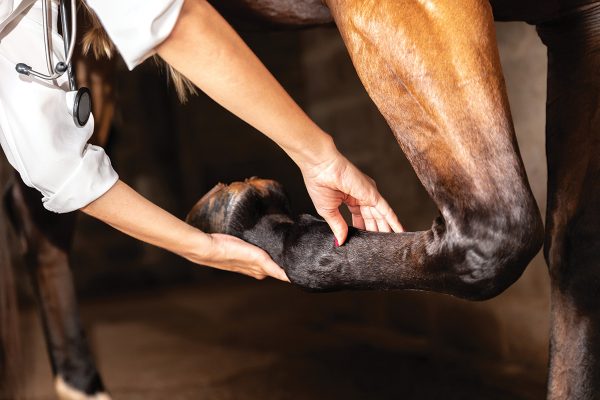
It’s easy to know when you don’t feel well. If something hurts, you know you can also tell an adult. Likewise, your horse communicates to you when he’s not feeling well, but these signs aren’t always obvious. Learning how to tell when your horse is sick is an important part of responsible horse ownership. Let’s learn how to spot the signs.
Know Normal
Have you ever seen your horse doing something and wondered: does he always do that? It can be difficult to judge when something is abnormal if you first don’t know what normal looks like.
To know how to tell if a horse is sick, you have to first know how to spot a normal horse.
To start, watch your horse in the pasture and stall when he doesn’t know you’re looking. Observe how he stands and moves when relaxed.

How much does he swish his tail? How often does he drink and graze? How frequently does he roll, lay down for a nap, and play with others? Knowing his habits when he feels good will help you quickly notice when he behaves differently due to illness.
Observe Demeanor
Before you even touch your horse, you may be able to sense that he doesn’t feel well. When he isn’t feeling himself, he may act restless or quieter than normal, depending on what’s wrong. Often this change is the first thing you notice about your sick horse to be able to tell he is ill.

Be aware of how your horse interacts with you and other horses. If he typically trots to the fence for a carrot but is suddenly alone in a corner of the field, something might be bothering him. Signs of lethargy include being quiet and withdrawn. Is your horse holding his head low and not perking up when he sees you? Are his ears slightly back?
Other times, especially with gut pain, a horse may be restless. Watch your horse closely to see if he’s shifting weight from leg to leg or repeatedly getting up and then lying down again. With colic, typical restless signs include looking at the belly and pawing at the ground.

Lack of appetite or drinking can also be a huge clue as to how your horse is feeling. If your horse typically bolts his dinner or pushes past others to get to the hay but is now not interested, something is up and should be investigated further.
Also, know how much your horse normally eats and drinks in a day. The average horse drinks between 5 and 10 gallons of water per day, according to the American Association of Equine Practitioners.
Take a TPR
Once you’ve observed your horse and think something’s not right, put a halter on him and measure his vital signs. The three primary vital signs a horse owner can take are temperature, pulse, and respiration, abbreviated as “TPR.”
If you have a thermometer and know how to safely take a horse’s rectal temperature, do so. Ask someone to hold the horse’s head if needed and remember to stand toward the horse’s side.
Next, feel for your horse’s pulse. A good place to do so is the inside of his cheekbone. Once you find his pulse, count it for 15 seconds and multiply by four to calculate his heart rate as beats per minute (bpm).
Lastly, check his respiration rate. This one is easy: step back and count breaths for another 15 seconds and multiply by four.
According to the American Association of Equine Practitioners, a normal adult horse at rest should have a temperature between 99 and 101.5 degrees Fahrenheit, a heart rate between 28 and 44 bpm and a respiratory rate around 10 to 24 breaths per minute. Younger horses’ TPR varies from an adult horse. Numbers outside of these ranges may mean it’s time to call the vet.
Another good thing to check is your horse’s gums. If he’ll allow, take a peek under his lip. Gums of a healthy horse should be pink and moist. If they are dry, this could indicate dehydration. Different shades other than pink, such as pale pink or dark red, can indicate health issues that should be evaluated by a veterinarian.
Manage Manure
Your horse’s manure will tell you a lot about his health. Horses should produce regular amounts of uniformly shaped manure balls throughout the day.
If you don’t notice any manure in your horse’s stall, especially overnight, or only see a small amount of dry manure, something may be wrong. Likewise, if you notice large amounts of extremely loose stool (diarrhea), this might be something to be concerned about as well. According to the AAEP, a healthy horse will pass manure eight to 12 times a day.
Look for Something Amiss
Sometimes we get so involved with the details that we miss an obvious clue. Does your horse have a runny nose? Is he coughing? Is something swollen, like an eye or fetlock? Do you see any blood or signs of a wound? Is your horse lame or unwilling to move? Putting clinical signs together with your other observations can provide a very good description for your veterinarian.
In addition to what you see in front of you, don’t forget to consider how your horse has been over the past few weeks. Have you noticed any weight loss or rough coat? Sometimes more chronic conditions take longer to reveal themselves.
Remember that you don’t have to be able to determine exactly what is wrong with your horse, just that something isn’t right. This alone is enough information to help your vet. Write down findings in a notebook, especially numbers like TPR, as well as the time and date they were taken.
With just some good observation skills, you’re on the right track to watch out for your horse.
This article about how to tell if your horse is sick appeared in the June 2020 issue of Young Rider magazine. Click here to subscribe!



